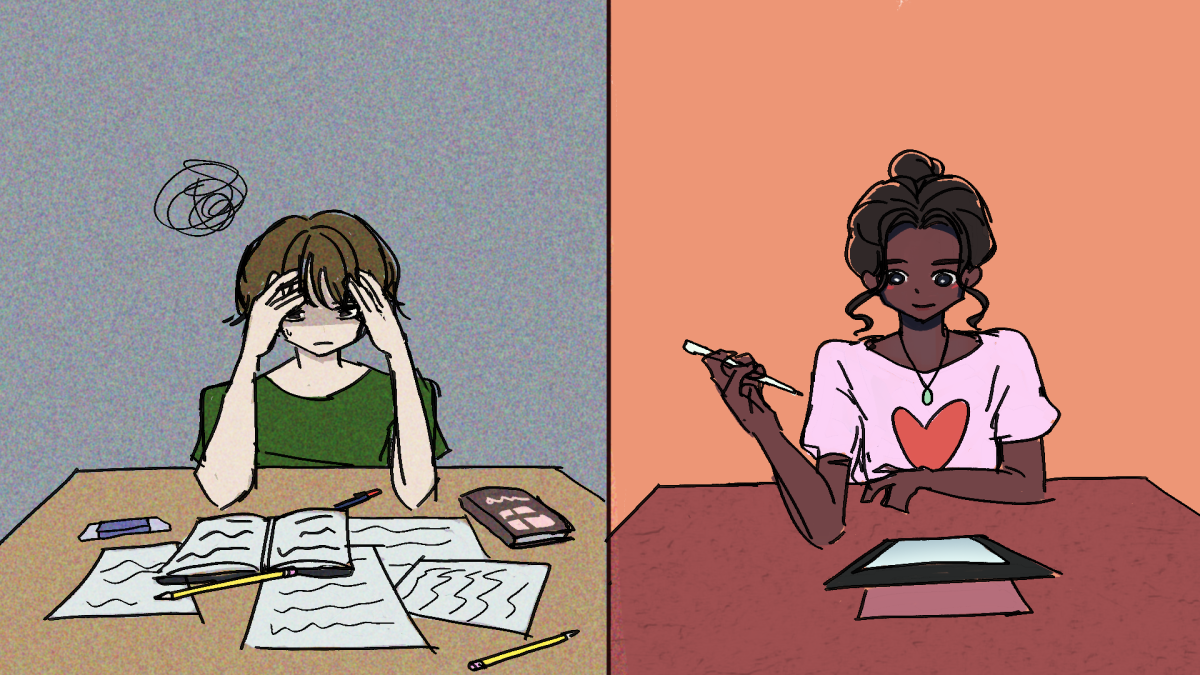
Angel Chen, Graphic Illustrator
Pen and paper have long been symbols of college life, but in NC State’s lecture halls, those staples are being replaced by iPads and Apple Pencils. And for many students, keeping up with fast-paced courses feels nearly impossible without them.
Up against a diverse workload, this raises the question of whether electronic notetaking creates an effective productivity boost, or adds a paywall between students and success.
Mina Azhar, a first-year studying engineering, explained that increased clarity and efficiency fueled her desire to switch from paper to using an iPad.
“Almost all of my professors upload their notes digitally,” Azhar said. “For Calculus 3, my professor moves incredibly fast, and I have bad handwriting, so it’s difficult to decipher what I’ve written. I would like to upload her notes and annotate them after class.”
What was once a preference has become a near-necessity as even professors have begun adopting iPad use to illustrate lectures. Paper notebooks aren’t gone, but their relevance continues to slip as they are pushed into obsoletion by a new classroom standard.
“My calculus professor writes on pen and paper under a projector but my TA uses an iPad,” Azhar said. “My professor will run out of space or has to clump words together which makes the notes difficult to read. My TA can just move things around and there’s no difficulty reading the notes later on.”
This new efficiency comes with a hefty price tag, and students have to weigh the cost and benefit of adapting to the technology tidal wave.
“Cost is most definitely a factor,” Azhar said. “I chose an older model because the newer ones were so expensive. Now it’s something I’m saving for, because it’s an investment, but it does come with a ridiculous price tag.”
While technology in the classroom brings benefits, not every student has equal access. The modern “Apple ecosystem,” or collection of various Apple products, has replaced notebooks and also emboldened the line dividing students not by interest or ability but by access.
Marta Klesath, an associate teaching professor in the Department of Biological Sciences has incorporated the use of iPads in her anatomy and physiology course for lecturing and notetaking. She discussed some of the options for students to gain access to this technology.
“Any technology is going to cost a set amount that can be difficult for students, and that includes not just iPads, but desktops and having the proper software,” Klesath said. “I think the school tries to mitigate that in a variety of ways, especially through our bookstore, special pricing and the availability of a lot of tools that you can check out at the library.”
In a diagram-heavy subject such as anatomy and physiology, use of an iPad can provide major benefits — from the ease of switching colors to making notes on pre-downloaded images. To make this option more accessible, the university provides 39 iPads for 50 students in Klesath’s anatomy and physiology lab courses.
“I find iPads very useful in the lab, because they can take pictures of the models, they can draw on them and I have provided Procreate, a drawing app, to aid that process since anatomy is a very visual discipline,” Klesath said.
Klesath also mentioned that while iPads can be helpful, students don’t have to use one to succeed in her classes.
“I don’t think that I give them [students] anything they need an iPad for. Everything I do in my class, they can also do utilizing paper or a laptop,” Klesath said. “It’s not necessary, but I think the students find it helpful.”
The paper notebook may not be extinct, but it’s certainly endangered. And as glowing tablets light up the rows of lecture halls across NC State, the sound of pen on paper fades a bit more each semester.